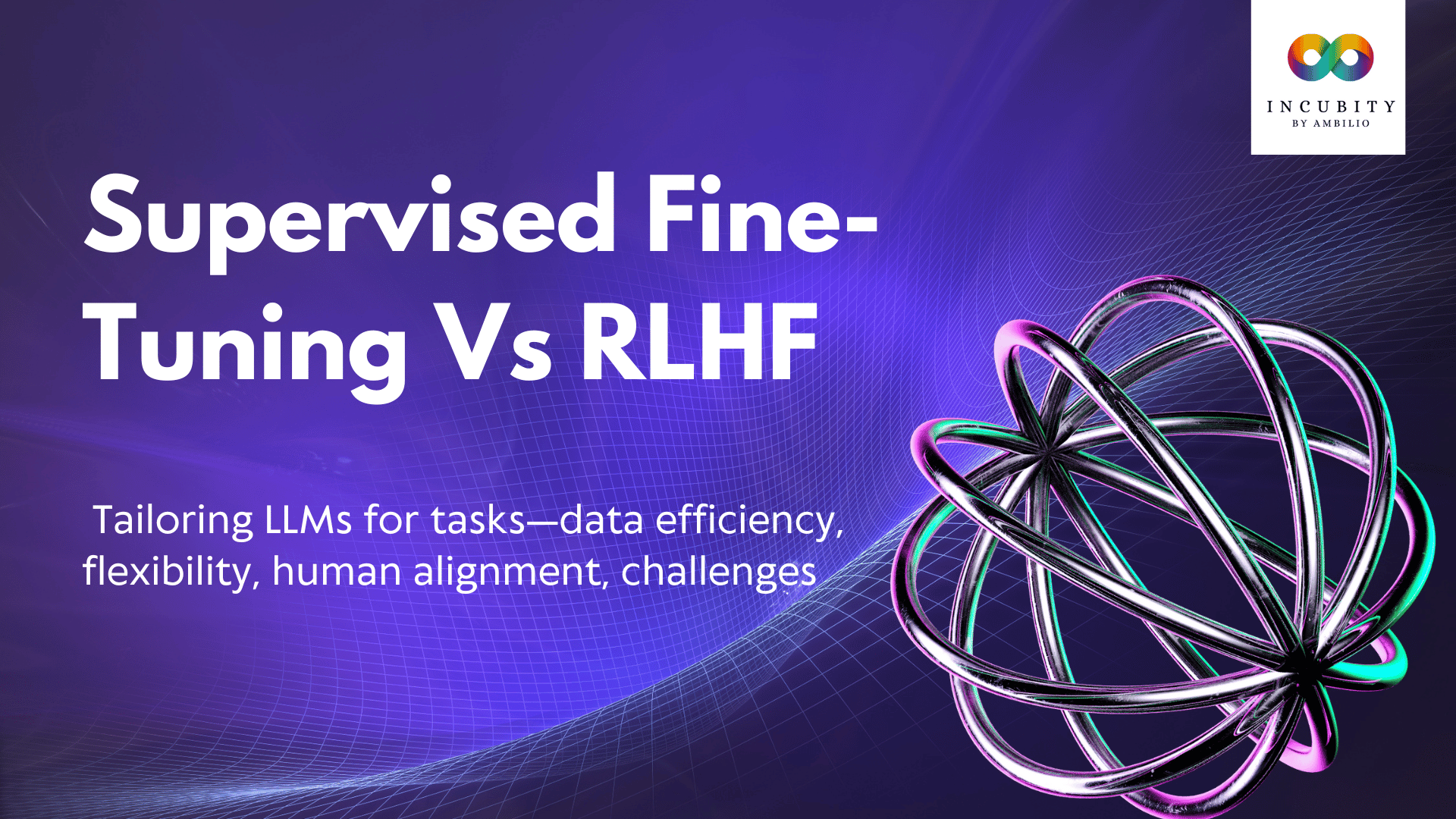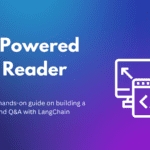The advent of Large Language Models (LLMs), such as GPT and LLaMA, has significantly advanced natural language processing capabilities. However, achieving optimal performance for specific tasks requires tailoring these models through a process known as fine-tuning. Fine-tuning involves updating a pre-trained LLM with task-specific data, enabling it to specialize and excel in particular applications. In this article, we explore two prominent approaches to fine-tuning: Supervised Fine-Tuning and Reinforcement Learning from Human Feedback (RLHF). So lets delve into supervised fine-tuning Vs RLHF for LLMs and lets navigate the languague model optimization.
Supervised Fine-Tuning
Supervised fine-tuning operates on the principle of leveraging labeled data to guide the optimization of LLMs for specific tasks. The process commences with a pre-trained LLM, which is then fine-tuned using a dataset of labeled examples relevant to the targeted task. These labeled examples consist of input-output pairs, such as question-answer combinations for a chatbot or labeled documents for classification. The LLM, drawing from its extensive pre-training, adjusts its internal parameters based on the provided labels, refining its ability to generate task-specific outputs accurately.
Supervised Fine-Tuning Steps
- Pre-trained LLM: Begin with a pre-trained Large Language Model (LLM) on a diverse dataset for general language understanding.
- Labeled Data Selection: Curate a dataset with labeled examples relevant to the specific task, such as question-answer pairs or labeled documents.
- Fine-Tuning Process: Feed the labeled data into the pre-trained LLM, adjusting its internal parameters based on the provided outputs. This process refines the model for the targeted task.
- Evaluation and Iteration: Assess the performance on validation data, iterate as needed, and fine-tune further until desired task-specific proficiency is achieved.
Benefits of Supervised Fine-Tuning
- Faster Learning: Utilizes pre-existing knowledge for quicker adaptation to specific tasks.
- Data Efficiency: Requires smaller labeled datasets compared to training models from scratch.
- Flexibility: Applicable across various LLMs and adaptable to different tasks.
Challenges of Supervised Fine-Tuning
- Data Quality: The model’s performance is highly dependent on the quality of labeled data.
- Task Complexity: More complex tasks may necessitate larger datasets and sophisticated fine-tuning strategies.
- Catastrophic Forgetting: Adjusting for one task might impact the model’s performance on previously learned skills.
Reinforcement Learning from Human Feedback (RLHF)
RLHF takes a distinctive approach by incorporating human feedback as a reward signal to drive the fine-tuning process. After the pre-training and supervised fine-tuning stages, the LLM generates task-specific completions, which are then evaluated against human-generated completions. This human feedback is utilized to train a reward model, assigning numerical values to the LLM’s outputs based on their alignment with human expectations. Subsequently, reinforcement learning is employed to optimize the fine-tuned LLM’s internal parameters, ensuring that it generates responses that not only align with the task but also match human preferences.
RLHF Steps
- Pre-trained and Supervised Fine-Tuning: Start with a pre-trained LLM and fine-tune it using labeled data as explained in the supervised fine-tuning steps.
- Human Interaction: The LLM generates task-specific completions, which are then presented to humans for evaluation.
- Feedback Collection: Gather human feedback, often in the form of comparisons, ratings, or annotations, to create a reward model.
- Reinforcement Learning Process: Utilize the reward model to drive reinforcement learning, adjusting the LLM’s internal parameters to maximize future expected rewards.
- Policy Improvement: The LLM refines its policy through reinforcement learning, improving its performance on the specific task based on the human feedback received.
Benefits of RLHF
- Flexibility: Particularly effective when labeled data is scarce, subjective, or unavailable.
- Human Alignment: Encourages the LLM to produce outputs aligned with human values and preferences.
- Bias Mitigation: Incorporates human feedback to potentially mitigate biases present in pre-trained models.
Challenges of RLHF
- Human Costs: Gathering and labeling human feedback can be resource-intensive.
- Reward Design: Designing an effective reward model that accurately reflects human values is complex.
- Safety Concerns: Ensuring responsible LLM outputs requires careful consideration and safety measures.
Supervised Fine-Tuning Vs RLHF
| Factors | Supervised Fine-Tuning | RLHF |
|---|---|---|
| Learning Efficiency | Faster learning leveraging pre-existing knowledge | May require more iterations due to the RL optimization loop |
| Data Efficiency | Smaller labeled datasets | Can handle tasks with limited labeled data or high subjectivity |
| Flexibility | Adaptable to various LLMs and tasks | Particularly effective in scenarios with scarce labeled data |
| Data Quality Dependency | Highly dependent on the quality of labeled data | Can mitigate biases in pre-trained models through human feedback |
| Complexity Handling | May struggle with more complex tasks | Effective for both simple and complex tasks |
| Human Resource Costs | Generally lower as compared to RLHF | Can be resource-intensive due to the need for human feedback |
| Safety Considerations | Generally safer as it doesn’t heavily rely on real-time human feedback | Requires careful consideration to ensure responsible outputs |
Conclusion: Navigating Supervised Fine-Tuning Vs RLHF
In conclusion, the choice between supervised fine-tuning and RLHF hinges on various factors, including the availability of labeled data, task complexity, and resource constraints. Supervised fine-tuning excels in scenarios with ample labeled data and straightforward tasks, while RLHF shines when data is scarce, tasks are complex, or human values play a pivotal role. The future of fine-tuning likely involves a combination of these techniques, capitalizing on their respective strengths to create highly specialized and human-aligned LLMs. Understanding the nuances of these approaches empowers practitioners to make informed decisions, contributing to the continual evolution of language models in enhancing our interaction with technology.



